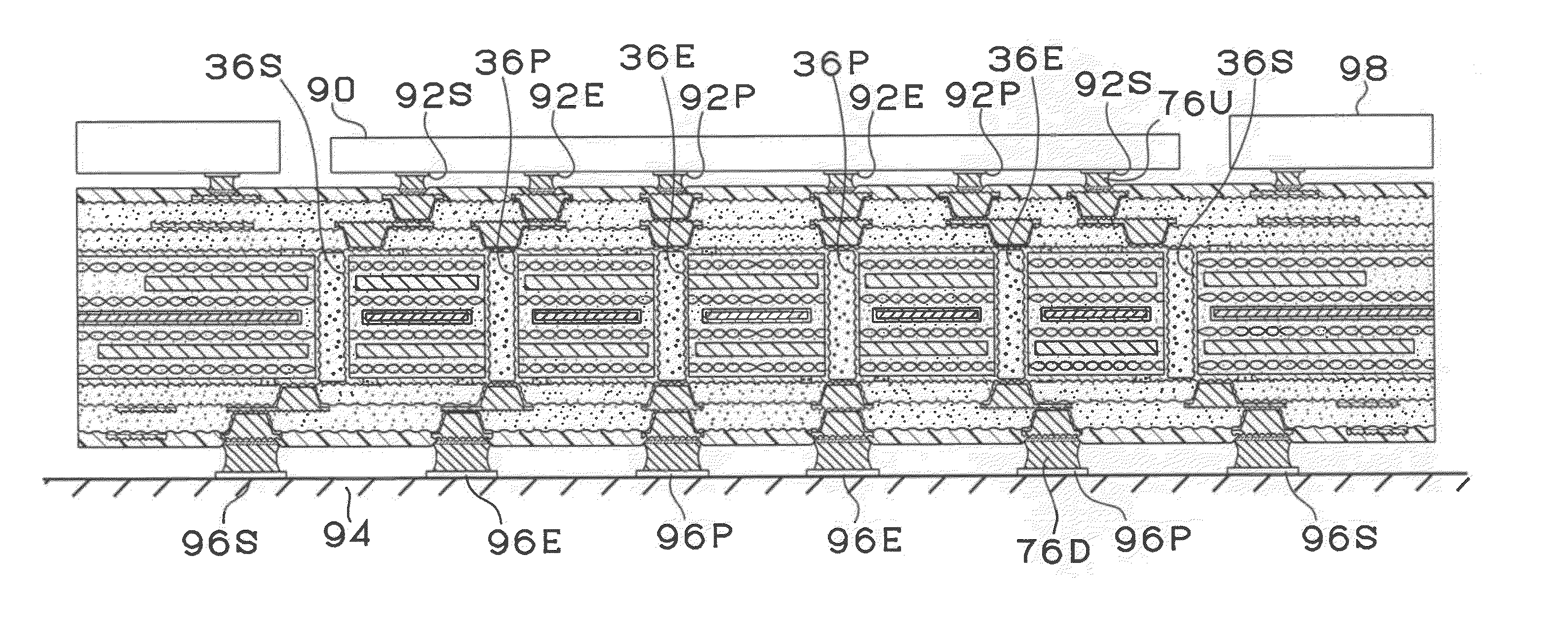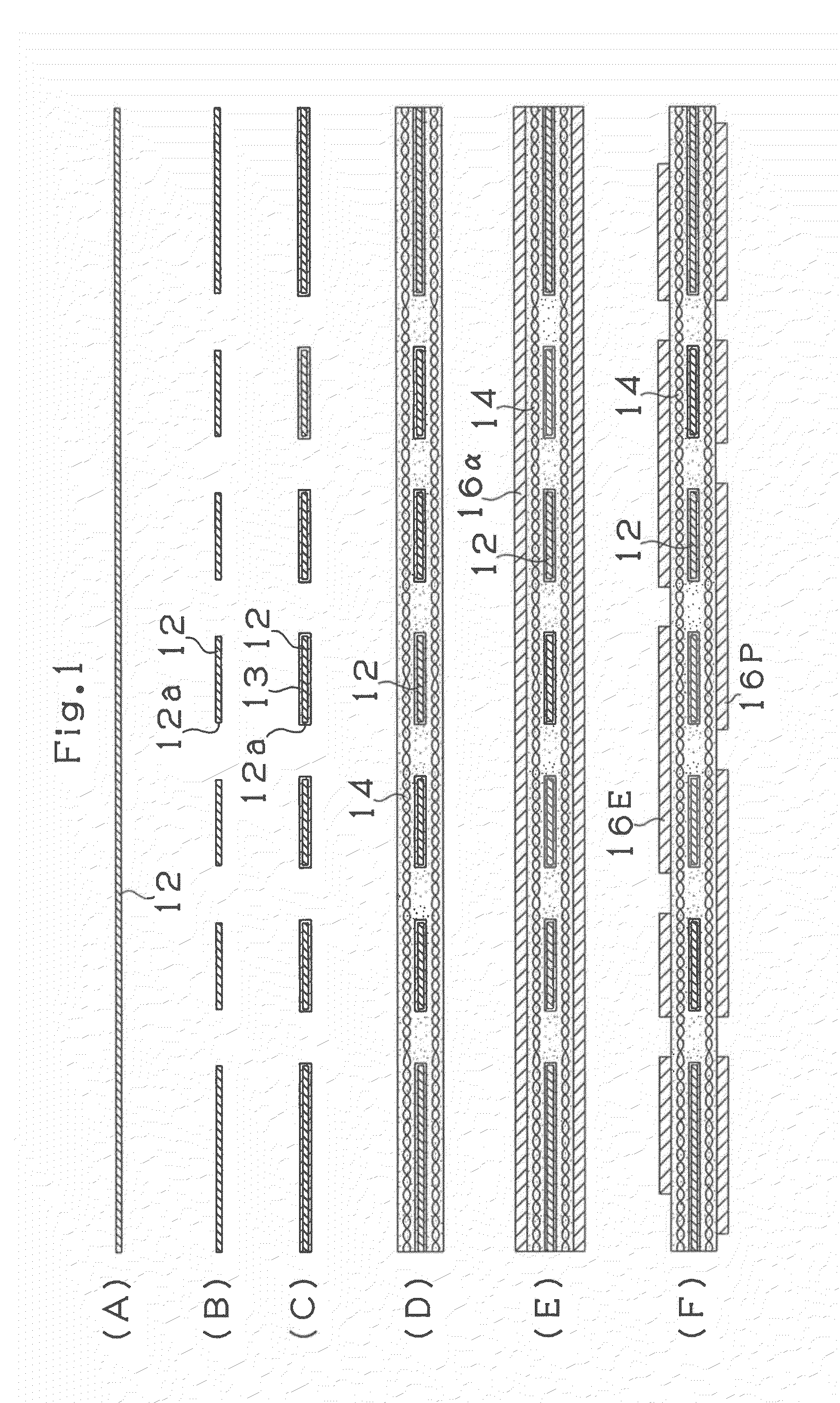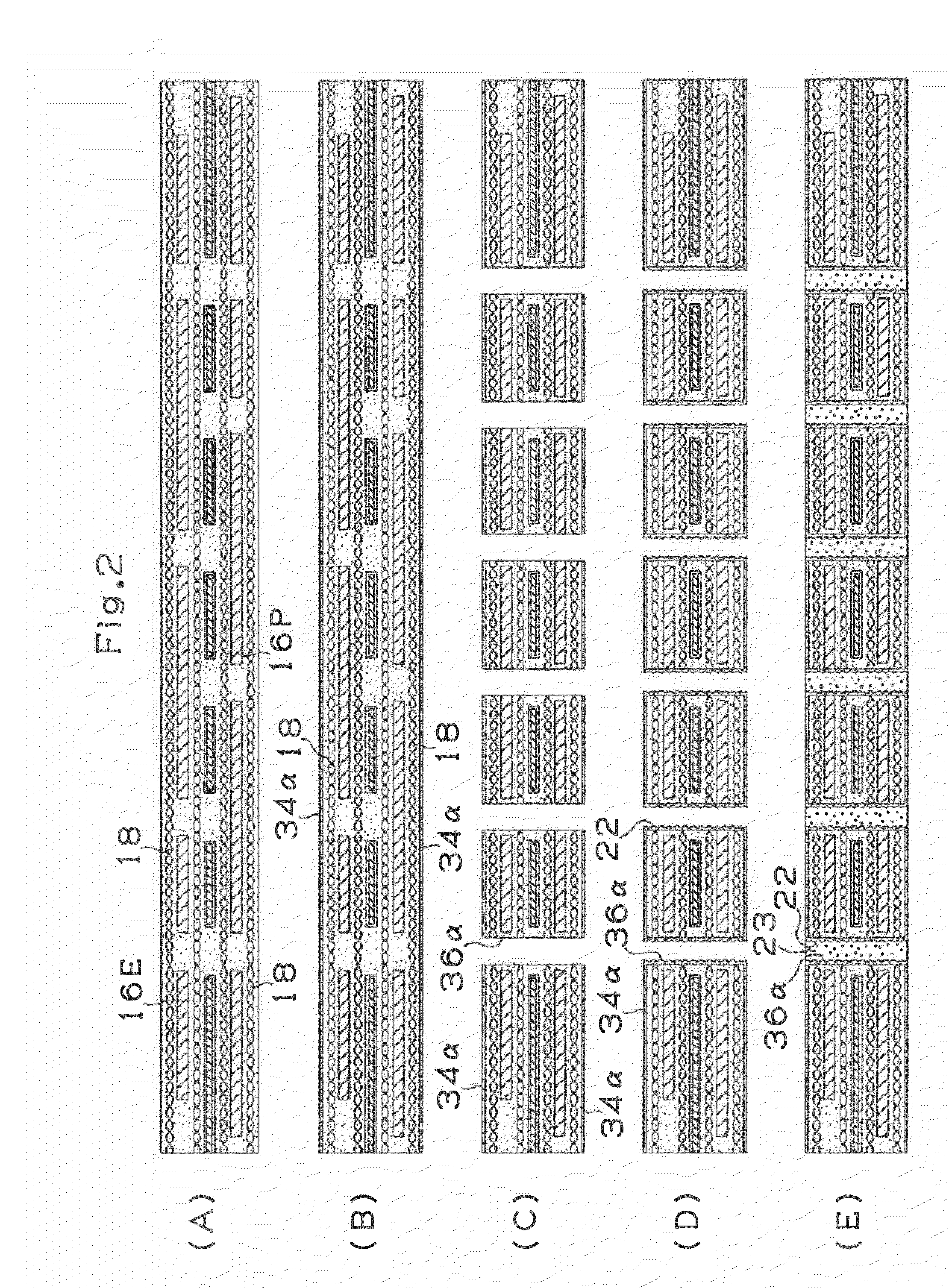Multilayer printed wiring board
a printed wiring and multi-layer technology, applied in the direction of printed element electric connection formation, high-current circuit adaptation, semiconductor/solid-state device details, etc., can solve the problems of high ic chip often turns inoperative, and increase the frequency of occurrence of malfunction or error. , to achieve the effect of improving the electric characteristic, reducing the total inductance, and easy matching
- Summary
- Abstract
- Description
- Claims
- Application Information
AI Technical Summary
Benefits of technology
Problems solved by technology
Method used
Image
Examples
first embodiment
4-Layer Multi-Layer Core Substrate
[0064]First, the configuration of a multi-layer printed wiring board 10 according to the first embodiment will be described with reference to FIGS. 8, 9. FIG. 8 shows a sectional view of the multi-layer printed wiring board 10 and FIG. 9 shows a condition in which an IC chip 90 is mounted on the multi-layer printed wiring board 10 shown in FIG. 8, and this is mounted on a daughter board 94. As shown in FIG. 8, the multi-layer printed wiring board 10 utilizes a multi-layer core substrate 30. A conductor circuit 34 and a conductive layer 34P are formed on the front side of the multi-layer core substrate and the conductor circuit 34 and a conductive layer 34E are formed on the rear side thereof. The conductive layer 34P on the upper side is formed as a plain layer for power supply and the conductive layer 34E on the lower side is formed as a plain layer for grounding. A conductive layer 16E is formed as an inner layer on the front side inside the multi...
second embodiment
3-Layer Multi-Layer Core Substrate
[0125]The multi-layer printed wiring board according to the second embodiment will be described with reference to FIG. 13.
[0126]According to the first embodiment described with reference to FIG. 8, the core substrate is composed of four layers (ground layers 16E, 34E: 2, power layers 16P, 34P: 2). Contrary to this, according to the second embodiment, as shown in FIG. 13, the multi-layer core substrate 30 is composed of three layers (ground layers 34E, 34E: 2, power layer 15P: 1).
[0127]In the multi-layer printed wiring board 10 according to the second embodiment, as shown in FIG. 13, the conductor circuit 34 and the ground conductive layer 34E are formed on each of the front surface and the rear surface of the multi-layer core substrate 30 and the power conductive layer 15P is formed inside the core substrate 30. The ground conductive layer 34E is formed as a ground plain layer and the power conductive layer 15P is formed as a power plain layer. The ...
third embodiment
Glass Epoxy Resin Substrate
[0133]Although in the first and second embodiments, the multi-layer core substrate 30 is employed, according to the third embodiment, a single core substrate 30 is used as shown in FIG. 15 and the conductive layers on both sides of the core substrate are formed as the power layer and ground layer. That is, the ground layer 34E is formed on top of the core substrate 30 and the power layer 34P is formed on the bottom thereof. The front surface and rear surface of the core substrate 30 are connected via the power through hole 36P, the ground through hole 36E and the signal through hole 36S. Above the conductive layers 34P, 34E are disposed the interlayer resin insulating layer 50 in which the via hole 60 and the conductive layer 58 are formed and the interlayer resin insulating layer 150 in which the via hole 160 and the conductor circuit 158 are formed.
[0134]According to the third embodiment also, like the first embodiment described with reference to FIG. 10...
PUM
 Login to View More
Login to View More Abstract
Description
Claims
Application Information
 Login to View More
Login to View More - R&D
- Intellectual Property
- Life Sciences
- Materials
- Tech Scout
- Unparalleled Data Quality
- Higher Quality Content
- 60% Fewer Hallucinations
Browse by: Latest US Patents, China's latest patents, Technical Efficacy Thesaurus, Application Domain, Technology Topic, Popular Technical Reports.
© 2025 PatSnap. All rights reserved.Legal|Privacy policy|Modern Slavery Act Transparency Statement|Sitemap|About US| Contact US: help@patsnap.com



